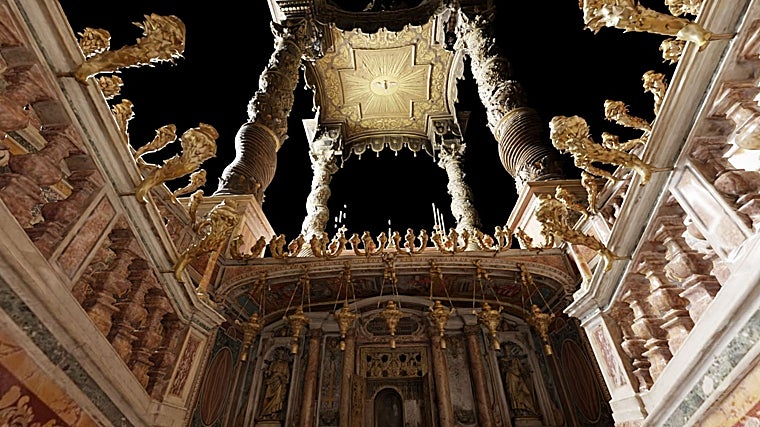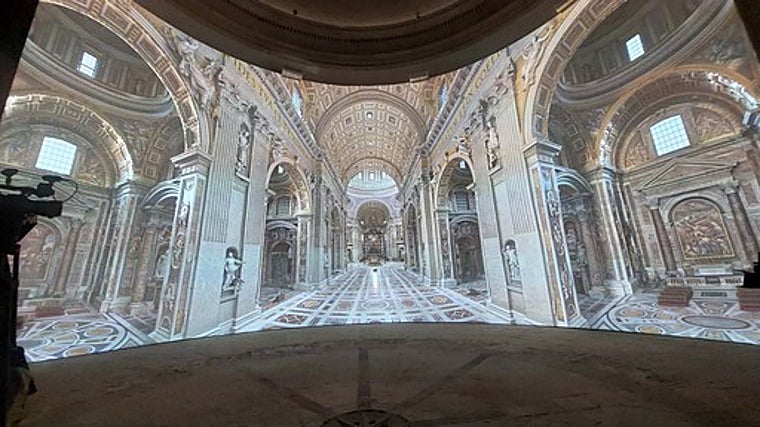As of this Monday, St. Peter’s Basilica has an identical ‘digital twin’. Its parents are a French company expert in “digital conservation” of the artistic heritage of war zones and the artificial intelligence (AI) model of the giant Microsoft. The clone has made it possible to detect damage to the basilica’s mosaics and launch an ultra-realistic website that shows the Vatican basilica in detail. Furthermore, the enormous amount of material collected has convinced the Vatican to open an area of the basilica until now closed to project life-size details of the temple that houses the tomb of Saint Peter that the human eye cannot see.
If it took 120 years to build the Vatican basilica, it took only two and a half years to capture and process every millimeter of its surface. Just think that its mosaics, made of half-centimeter tiles, occupy about 10 square kilometers and that it took 400,000 high-definition photographs to capture them. “It is a work of art like those from Michelangelo’s time, but it puts people at the center and aims to help them live an experience of spirituality,” Enzo Fortunato, spokesperson for the basilica, confides to ABC. “It’s impressive to see what they’ve managed to do with our technology,” echoes Microsoft representative Brian Wesolowski.
Microsoft’s idea is to “digitally preserve and democratize access to St. Peter’s Basilica, leveraging AI and photogrammetry.” For this technology giant “the project guarantees that the cultural and historical importance of the Vatican endures for future generations and is accessible to a global public.” For the first time they have used artificial intelligence in the Vatican “to identify structural damage with a speed and precision that far exceeds human capacity.”
They have had the help of the French architect Yves Ubelmann and his company Iconem, which has photographed in detail the artistic heritage of Syria, Iraq and Afghanistan to preserve their memory. He and his team of five divided St. Peter’s Basilica into 20 billion points and made sure to capture them with drones and high-definition cameras. «It took us a month and a half to cover the entire surface. Then we dump all that information into a single database to combine them. As a result, the complexity of the technology that Renaissance architects used to construct this building comes to light. There are many non-visible spaces, essential to support the dome,” explains Ubelmann.
Reproduction of the basilica
Using artificial intelligence software, they connected the visual data from those 400,000 photographs and built a 3D model of the basilica. This completed the gaps, unified the lighting and gave depth, so that the representation of the basilica was extremely realistic. The result is impressive.

Image of the Baldachin created thanks to the use of AI
The images have allowed us to “study the state of conservation and see where the tiles of the basilica’s mosaics are missing, for example in the dome.” Also beginnings of cracks and fissures have been detected that will serve as a basis for future restoration work.
In addition, Microsoft and the Vatican are launching this Monday an ultra-realistic website that shows the different layers of the basilica’s skeleton, the solutions that the Renaissance architects found to support its weight, and allows “to see many of these works up close, which that until now could not be done.
Thirdly, the Holy See has opened a new area, in unused rooms on the roof of the basilica, where starting this Monday it will host an immersive exhibition about the basilica and project life-size details of its heritage.
“From now on, visitors will be able to better perceive the complexity of this building,” Pietro Zander, the archaeologist who guards the heritage of St. Peter’s Basilica, explains to ABC as we walk in the shadow of Michelangelo’s dome. from where the artist watched the works centuries ago. The organizers boast of having designed the route “in a way that is respectful of the environment and the basilica. “It is an exemplary model because it is not a toxic use of technology, which is not invasive of the spirituality, history and value of this place.”

The interior of the digital basilica
The Jesuit Francesco Occheta, who coordinated this space, does not hesitate to define it “a gift for the basilica.” “Thanks to AI it will be possible to see the basilica from all angles: like an x-ray, horizontally, vertically, or even go back in time to better understand the present,” he explains. «It does not have only aesthetic intentions, it is linked to technological innovation since many are looking for a place to meet God. “Now those who do not have the possibility of traveling to Rome will be able to arrive.”
The project is called ‘St. Peter’s Basilica: AI-Enhanced Experience’ and it doesn’t end here. In January Microsoft will launch a version of Minecraft set in the Vatican. Who knows if among its players there will be both the Michelangelo and the Pope of the future.
#digital #twin #Peters #Basilica #reveals #secrets #Vatican

